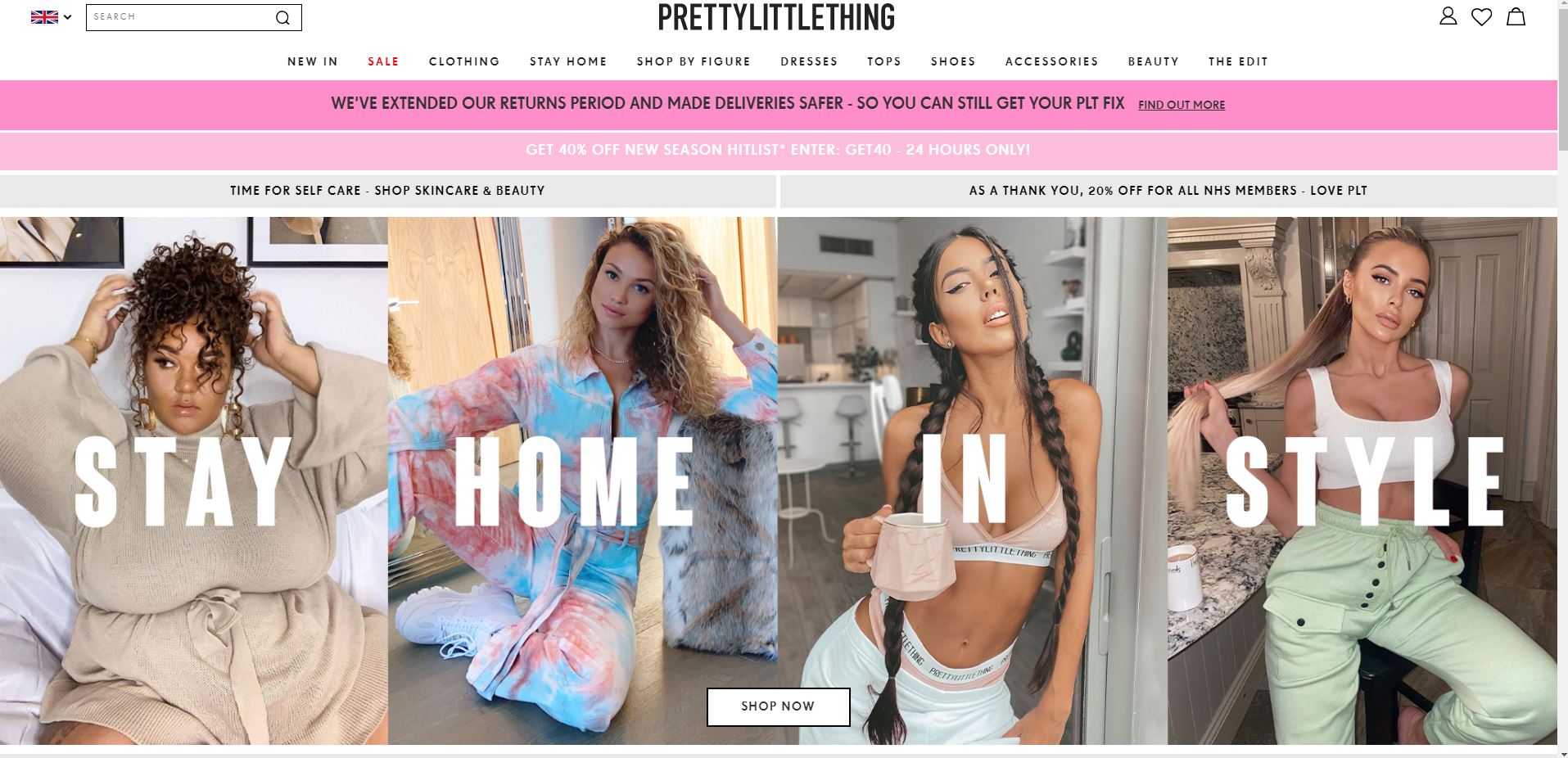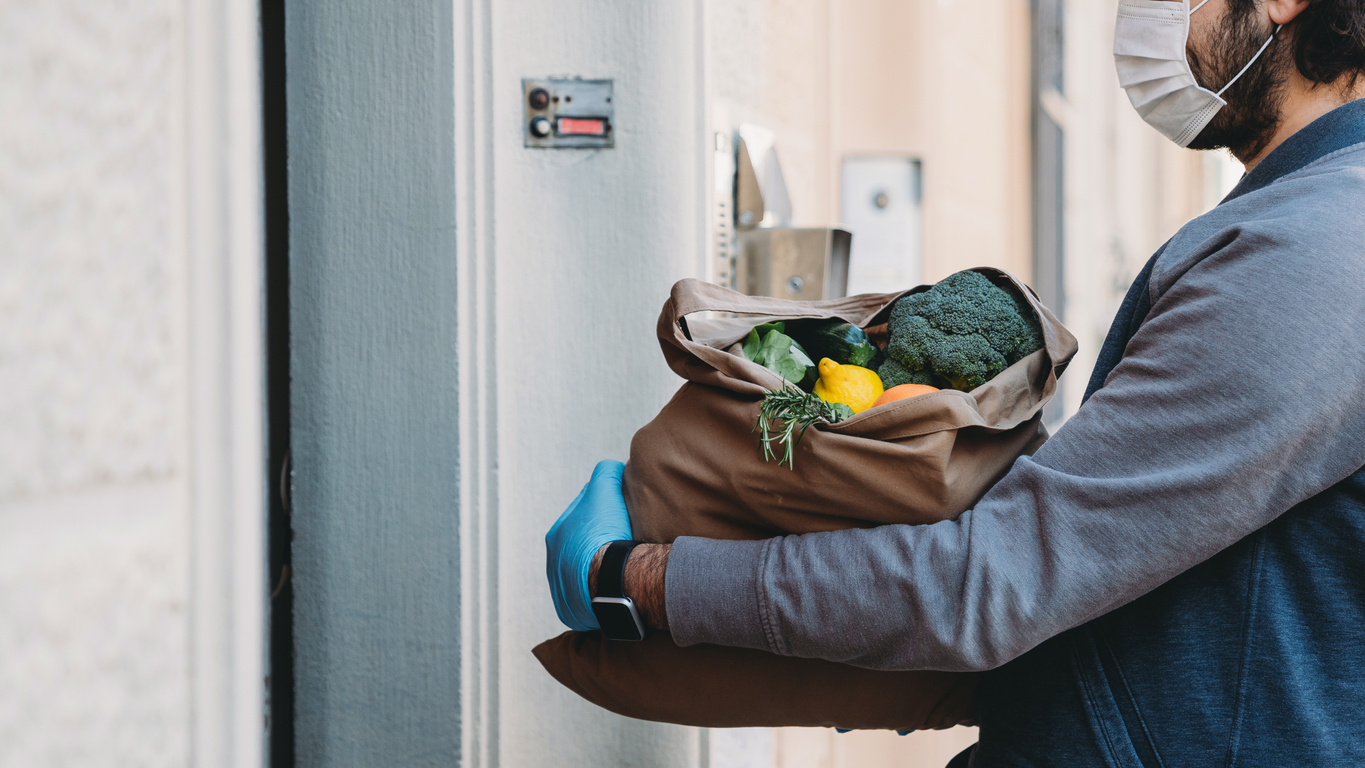
By Ben Sillitoe
Talking as a consumer rather than an industry journalist, it seems like the grocery CEOs have had my Hotmail account on the email equivalent of speed dial over the last month or so.
I’ve lost count of the number of emails I’ve received from Mike Coupe at Sainsbury’s, Roger Burnley at Asda, and Steve Rowe at Marks & Spencer in recent weeks, as the various new measures supermarkets have introduced to reflect the Covid-19 coronavirus crisis have been communicated to me.
That just reflects my own grocery store consumer preferences, and I imagine the other major supermarket chains have been equally as active in their emails to customers. Rightly so, as the rules, and processes around grocery shopping in a national health emergency are moving rapidly, and shoppers need to be kept informed.
But what is the protocol for the retailers deemed ‘non essential’ by the government – those who had to close the doors to their stores on 23 March, if they hadn’t done so before? How should they be communicating with shoppers during a lockdown?
Over the last few weeks, I’ve seen some great messaging that’s really hit the right note such as TM Lewin’s “Work Smart (waist up)” campaign, which implies people only need to get smartly dressed for the parts of the body visible on video conferencing calls. Equally, I’ve seen some unsuitable communication too, often using the words such as “viral”, albeit perhaps inadvertently.
A big shout out should be directed towards outdoor equipment retailer Go Outdoors and fitness clothing pureplay Gymshark, which have temporarily changed their branding to ‘Go Indoors’ and ‘Homeshark’ respectively. The moves reflect the current government guidance for people stay at home wherever possible, and represent brand appropriate marketing.
Zach Thomann, executive vice president & general manager at PFS, a fulfilment services provider, notes: “Provided you are respectful in your approach, consumers will appreciate brands’ attempts to lighten the mood. Importantly, it’s vital to ensure the messaging is transparent and honest, whilst being in tune with the evolving situation.”
The challenge
Inevitably, in this unique period of nationwide lockdown, there are going to be different views about how brands operate and market to consumers. Some strong voices on social media suggest its distasteful to even try and sell ‘non-essential’ goods in such a crisis, while others are keen for any sort of financial exchange to keep the economy going.
I place myself in the camp supporting retailers in their efforts to chat to shoppers where appropriate, be it reminding them of their existence, promoting availability and offers, or providing some useful content for these strange times.
Laurel Wolfe, vice president of marketing at Klarna, the leading global payments and shopping provider, says: “Due to the lockdown situation we find ourselves in, it’s a particularly challenging period for marketers in the retail sector, and brands are being forced to re-evaluate customer acquisition priorities and strategies.”
She adds that brands are diverting budgets from out-of-home campaigns towards digital and social spend, noting: “The best-equipped brands will come through this, and loyal customers will return in the future, but in the meantime, it’s crucial that conversations between brands and consumers continue.
“Tone of voice has never been a more important tool in the modern marketer’s arsenal and empathy and authentic conversation is critical.”
Many in the world of commerce right now are battling for their very existence. It’s a message neatly illustrated by the “Business of Survival” title page on The Economist, this week, and it is an indication of how retailers need to be keeping one eye on the present while also contemplating their post-pandemic future.
One way of doing that is via their gift card strategy, according to Malcolm Berg, vice president for sales at SVS UK, a business which supports and processes transactions on gift card programmes.
Rewarding loyalty and offering incentives to buy later down the line can be accompanied by messaging such as “Thanks for sticking by us during lockdown, here’s a gift card for you to use when we re-open. In the meantime, Stay safe. Stay home”, Berg advises.
For Mike Harris, vice president & general manager for the international arm at Bluecore, an eCommerce marketing technology firm, it’s crucial for retailers’ websites, emails, and social media profiles to “be reflective of the current times”.
“Build a landing page communicating your stance on the crisis, including how returns will be handled, store closure logistics, and more,” he recommends.
“Pivot your campaigns to focus on necessary items for now: rebrand loungewear as ‘work from home’ attire, promote maintaining a work/life balance through your activewear line, and, as always, ensure your copy is empathetic, relatable, and optimistic.”
He adds: “On social media, consider sharing recipes, at home workouts, or other relatable content that may not directly relate to a product or service but instead builds a direct connection with your target audience.”

How to… get through a pandemic
Conor McGrath, head of UK and Nordic clients at parcelLab, a parcel monitoring software company, says: “As we’re urged to stay at home, many people will be trying activities they don’t usually participate in, either through the necessity of social distancing – cleaning, gardening, cooking, DIY – or to make use of at-home time such as learning an instrument, a new artistic craft or game.
“Shoppers making purchases related to rusty or new skills will appreciate expert advice and help – videos, how-tos, recipe ideas etc – which can all be an added bonus delivered to them through tailored post-purchase communications. This feel-good content helps to build a sense of community, which many will be craving.”
Food retailers Pret a Manger and Waitrose are among the businesses using their social media accounts to showcase recipe ideas and cooking tips for those either missing their regular lunchtime treats, or in need of some inspiration.
Lauren Cassidy, content marketer at Kooomo, an eCommerce platform provider, says retailers she has spoken to are focusing on “entertaining and relatable” content, as opposed to sales-driven material, to maintain audiences on social media. Utilising their creatives to maintain relationships with their followers may be a prudent route for retailers, she argues.
“Primarily, they are focusing on comedy/entertaining videos and how-to tutorials using a few of the company’s products,” she explains. “The videos are recorded by staff members from their own homes – tapping into the sense we’re all at home together.”
McGrath adds: “If retailers aren’t in a position to produce flashy extras, then focus on solid fundamentals. Reward loyalty. Communicate clearly and sympathetically. Provide regular updates on where their order is, when it will be delivered and by who.”
With so many shops shut during this time and with people staying in while following official social distancing protocol, home delivery marks one of the few points of contact many people have with the outside world, excluding friends and family. White Stuff is one fashion retailer steadfastly going about its online business, with a continuous stream of customer emails, while promising physical content for its customers in the form of a ‘magalogue’.
Indeed, Amanda Griffiths, head of communications planning at Royal Mail MarketReach, the carrier’s dedicated mail marketing expert team, says catalogues and printed marketing material could be a powerful tool during the pandemic.
She commends retailers for their quick thinking at the beginning of the lockdown, when homepages were tailored to the situation and online product campaigns were adapted for homeworking. But, as the crisis goes on, she advises using mail-based marketing to prevent messaging becoming formulaic.
“At a time when shops are closed, a catalogue delivers your shop window, the knowledge of your best employees, and access to your full range – all in one,” Griffiths notes, calling it “brand in the hand” marketing.
“There are many other ways to keep customer conversations going with mail in these challenging times. A letter or mail pack to key audiences, such as your most valuable customers or those at risk of lapsing, allow you to show how much you value your customers.”
She adds: “You can keep conversation flowing by asking for feedback and delivering updates on your coronavirus business plans, early launches, special offers, or future offers redeemable when things go back to normal. And QR codes can open communication about your business even further.”

Summary
In addition to the established marketing and communications channels, new avenues to customers are set to emerge in this pandemic. With the world and their dog seemingly using video-conferencing on a daily basis – be it for work or for one of several weekly quizzes with friends and family – might brands look here for traction?
I spoke to Kieron Smith, digital director at bookseller Blackwell’s, who has compiled some Zoom backgrounds depicting his company’s closed flagship Oxford store. It’s a first for Blackwell’s, with people able to download them for their Zoom accounts, and essentially offering some free marketing to the retailer in the process.
“Bookshops are attractive things and obviously our shop in Oxford is particularly attractive so we thought it was a nice opportunity to do some fun stuff,” he said. I expect he won’t be the only retailer to do that – indeed, I’ve seen Chelsea Football Club actively promoting their Zoom backgrounds for download too, in line with the times.
Whether ploughing on with tried and trusted messaging or trying something new, everyone seems to agree it’s an important time for businesses in terms of upholding or improving their image.
As Jon Maury, EMEA managing director at ChannelAdvisor, an eCommerce platform provider, notes: “Brands’ and retailers’ reputations will be defined by their communication over the coming months.
“As the uncertainty continues, with no end yet in sight, the focus should be on sensitivity, empathy, consistency and transparency across all channels to maintain trust with consumers.”
He adds: “Screen time and social media use have gone up exponentially too, so now is a good time to work on building your community – for fun and interesting content to raise awareness of your brand.”
By Ben Sillitoe


